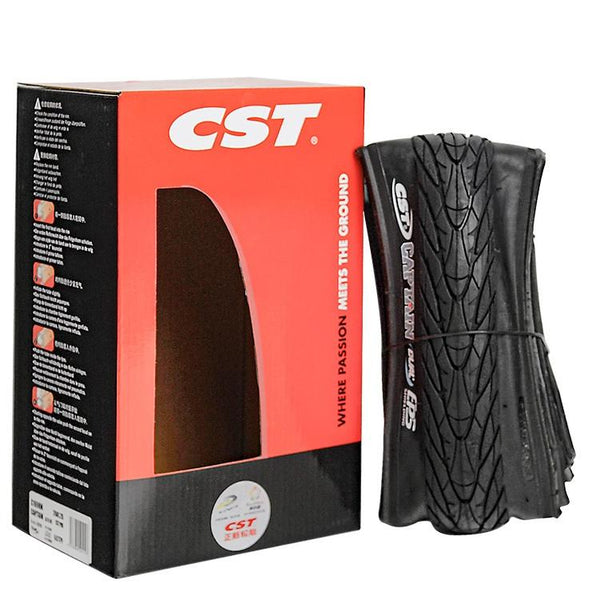The world of cycling is as diverse as the terrain it traverses, and when it comes to tire selection, riders are often faced with a critical decision: wide mountain bike tires or fat bike tires? In this comprehensive guide, we'll explore the nuances of these two tire types, comparing their specifications, performance characteristics, and factors to consider when choosing the optimal tire for your riding adventures.
Understanding Tire Specifications
Before delving into the debate, it's essential to understand the key specifications that differentiate wide mountain bike tires from fat bike tires.
Wide Mountain Bike Tires:
- Width: Typically ranging from 2.3 to 2.8 inches.
- Tread Pattern: Designed for traction on rough and technical trails.
- Terrain Suitability: Well-suited for singletrack trails and aggressive riding.
Fat Bike Tires:
- Width: Significantly wider, ranging from 3.8 to 5 inches or more.
- Tread Pattern: Designed to "float" on soft surfaces like snow and sand.
- Terrain Suitability: Ideal for snow, sand, mud, and other soft or loose terrain.
Comparing Performance Characteristics
When evaluating wide mountain bike tires versus fat bike tires, several performance characteristics come into play:
-
Traction and Stability:
- Wide mountain bike tires offer excellent traction and stability on rough and technical trails, thanks to their aggressive tread patterns and narrower profile.
- Fat bike tires provide unmatched traction and stability on soft surfaces like snow and sand, allowing riders to navigate unpredictable terrain with confidence.
-
Floatation and Versatility:
- Fat bike tires excel in floatation, effortlessly gliding over soft and loose surfaces without sinking.
- Wide mountain bike tires prioritize agility and maneuverability, making them versatile for various trail conditions and riding styles.
-
Handling and Control:
- Wide mountain bike tires offer precise handling and control, ideal for navigating tight corners and technical sections of the trail.
- Fat bike tires may feel less agile due to their wider profile but provide stability and confidence on challenging terrain.
Factors to Consider When Choosing
When faced with the decision between wide mountain bike tires and fat bike tires, riders should consider the following factors:
-
Terrain:
- Evaluate the primary terrain you'll be riding on, whether it's rocky singletrack trails, sandy beaches, or snowy landscapes.
-
Riding Style:
- Consider your riding style and preferences, including your need for agility, traction, and stability.
-
Climate and Conditions:
- Factor in the weather and environmental conditions you'll encounter during your rides, such as snow, sand, mud, or dry trails.
-
Personal Preference:
- Ultimately, the choice between wide mountain bike tires and fat bike tires comes down to personal preference and the type of riding experience you seek.

Exploring the Pros and Cons
To delve deeper into the wide mountain bike tires vs. fat bike tires debate, let's break down the pros and cons of each:
Wide Mountain Bike Tires: Pros:
- Agile and responsive handling, ideal for navigating technical trails and tight corners.
- Excellent traction on rocky terrain, providing stability and control during climbs and descents.
- Versatile enough for all-around trail riding, from cross-country to enduro disciplines.
Cons:
- Limited floatation on soft surfaces like snow and sand, making them less suitable for extreme weather conditions.
- May struggle to maintain traction in deep mud or loose gravel, requiring precise line selection and rider skill.
Fat Bike Tires: Pros:
- Unmatched floatation and stability on soft surfaces, allowing riders to explore snow-covered trails and sandy beaches with ease.
- Exceptional traction and control in challenging conditions, including mud, sand, and loose gravel.
- Confidence-inspiring ride quality, smoothing out rough terrain and absorbing bumps for a comfortable experience.
Cons:
- Less nimble and agile compared to wide mountain bike tires, making tight maneuvers and technical sections more challenging.
- Higher rolling resistance on hard-packed surfaces, resulting in slower speeds and increased effort during pedaling.
Tips for Tire Selection
To make an informed decision when choosing between wide mountain bike tires and fat bike tires, consider the following tips:
-
Assess Your Riding Environment:
- Determine the primary terrain and conditions you'll encounter on your rides, prioritizing traction and stability accordingly.
-
Test Ride Different Options:
- If possible, test ride bikes equipped with both tire types to feel their performance characteristics firsthand and determine which feels most comfortable and suitable for your riding style.
-
Consult with Experts:
- Seek advice from experienced riders or bike shop professionals who can provide insights and recommendations based on your specific needs and preferences.
-
Experiment and Explore:
- Don't be afraid to experiment with different tire widths and tread patterns to find the perfect balance of grip, floatation, and agility for your riding adventures.
In the end, whether you opt for wide mountain bike tires or fat bike tires, embracing the diversity of the cycling world and finding joy in the journey is what truly matters. So, saddle up, hit the trails, and let the rubber meet the road—or snow, sand, mud, or whatever else nature throws your way!
Conclusion
In conclusion, the debate between wide mountain bike tires and fat bike tires is nuanced and depends on a variety of factors, including terrain, riding style, and personal preference. Both tire types offer distinct advantages and excel in different conditions, allowing riders to customize their bikes for optimal performance and enjoyment. Whether you're shredding technical trails or exploring snow-covered landscapes, choosing the right tire will enhance your riding experience and open up a world of adventures on two wheels.










